
We tested bacteria in a bottle products and found they simply didn’t work “as advertised”. This is an in-depth analysis of this test and the test procedure. It is very long and very boring and only for the folks who are nerds like the author.
Other Tests
There will always be those doubters who say this testing is bogus. But there have been a few other tests of bacteria in a bottle products. These tests all confirmed the test results below.
- A California fish veterinarian (cafishvet.com) tested five bacteria in a bottle products in 2019 and found five failures out of five brands:
“Our office tested 5 different products when we were getting our systems up and running. Do you know how many made a significant difference? ZERO.”
- One YouTube video maker, Girls Talk Fish, did a very well-run test with Fritzyme 7 bacteria in a bottle where the tank wasn’t yet cycled at 63 days of running. 63 days and it wasn’t cycled yet!
- Seachem tested its Stability bacteria in a bottle product for speed to cycle and found it took thirty-two days to cycle with Stability. The test results are shown in the chart below. This chart is from the Seachem website! That’s right, Seachem’s own test data said Stability bacteria took 32 days to cycle in an aquarium!!!
- Broken Aquarium tested Seachem Stability and Fritzyme bacteria in a bottle and got very similar results to what the test below got. They had control with no bacteria in a bottle which got to the end of cycling slightly faster than the bacteria in a bottle products.
- Helder ‘Herb’ Lopes did extensive testing of Fluval Cycle and found it ineffective.
With the test described here-in the score thus becomes Actual Testing 6, Manufacturers 0.
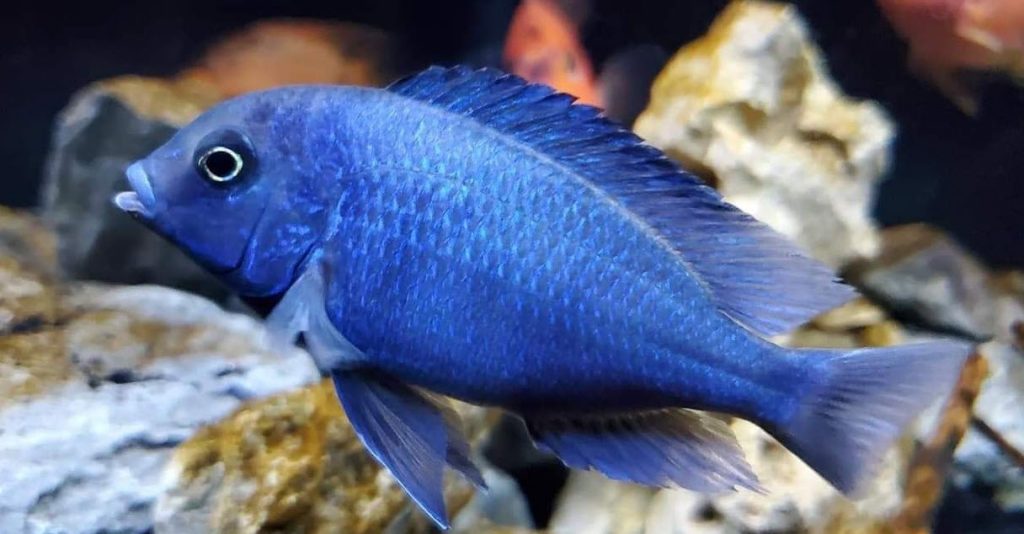
A New Study
There is a new, perhaps the first, peer-reviewed study about bacteria-in-a-bottle “Efficacy of quick-start nitrifying products in controlled fresh-water aquaria”, Scagnelli, Javier, Mitchell & Acierno: 2022. They tested following products:
- API Quick Start
- Imagitarium Biological Booster
- Tetra SafeStart Plus
- Seachem Stability
- Fluval Cycle
Tetra was the only product that worked. It consistently decreased the ammonium concentration from 1 ppm to a 0.29 ppm level over 14 days and increased the nitrate concentration over 14 days. Replicate studies (5x), controls and statistical analysis were used in a very good study. The filters used were Aqueon Quietflow 20 s. Note that the authors of this study ONLY added one ppm of ammonia at the very start of the experiment. They did not add it daily,

It is important to note the Tetra did NOT give immediate relief, instead it showed a straight line reduction from 1 ppm to 0.29 ppm over 14 days. If one assumes the straight line will continue and a week for nitrite cycling then the tank might be considered “cycled” somewhere around 20 to 30 days, not the one day claimed on the bottle.
All the other products did not work at all: the concentrations did not differ from the control aquaria without added bacteria product. The authors supposed the poor results derive from the reduced stability and viability of the microorganisms contained in the bottle. They assume nitrifying bacteria may be found in the products at the time of manufacture but transport and storage in temperature controlled environments is likely necessary to ensure viability of the bacteria.
The reason the Tetra worked is probably very simple. Probably by pure luck the Tetra product they obtained was the only product which had been very recently manufactured. This test again supports the idea that the vast majority of the time any bacteria in a bottle product will not work. This is somewhat proven as the Tetra Safestart did nothing in the test below by the author. The author probably had an older bottle. Note Tetra Safestart Plus supposedly has the same bacteria as the Safestart product only in twice the concentration.

Abstract of My Test
There are a whole series of “quick start”, “starter bacteria”, “nitrifying bacteria”, “stabilization systems” and “bacteria-in-a-bottle” products that claim to enable one to do the following:
- “Add Fish Immediately”
- “Safe Immediate Introduction of Livestock”
- “Allows Instant Addition of Fish”
- “Avoid New Tank Syndrome”
- “Prevents New Tank Syndrome”
- “Rapidly Cycle Tanks”
- “Allows Immediate Introduction of Fish”
Three tests were run on eleven popular bacteria-in-a-bottle products (seven of these were replicated twice for accuracy). Ten other treatments were used.
The first two tests had a phosphate fertilizer added at the beginning of the cycling. In the first two tests composted cow manure, brown gunk from an aquarium filter and garden soil took 8 to 12 days to cycle, the commercial “bacteria-in-a-bottle” products, and the four controls (no treatment) took 26 to 46 days to cycle.
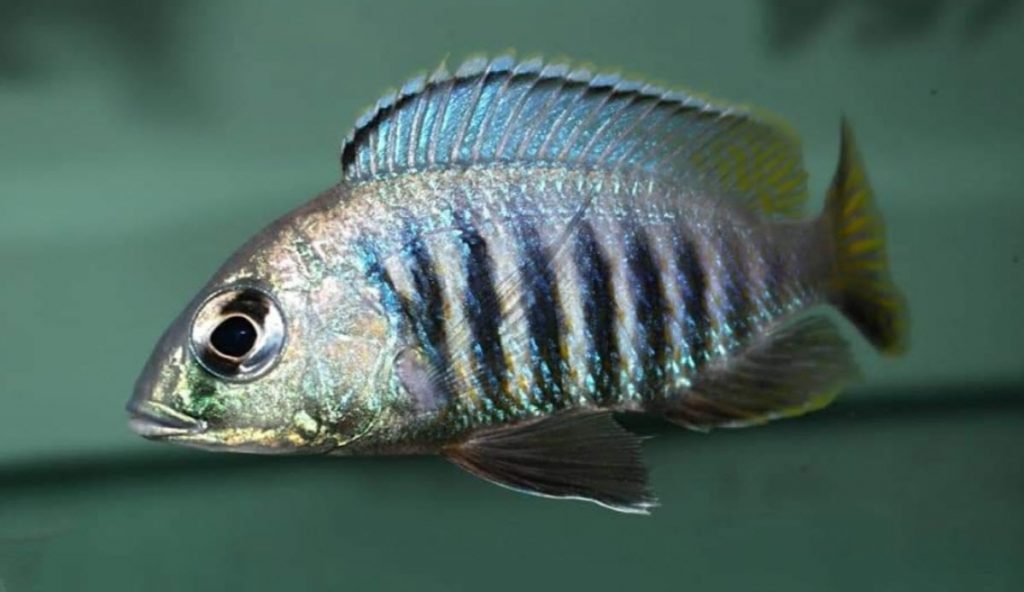
Surprisingly a third test showed that the addition of phosphate fertilizer is very important if one is cycling with ammonia.
A caveat has to be noted here. These tests were run in the same room that held several functioning breeding and quarantine tanks that had bubble aeration from air stone-operated sponge filters. These airstones would have produced what is called an aerosol of water droplets that contained very small amounts of beneficial bacteria. This bacteria may have slowly inoculated all of the experiments below. This may well have given faster times to cycle than one might get in a less favorable environment. There is no way to know if this happened.
Test of Bacteria in a Bottle Products
The three tests can be put into a table format:
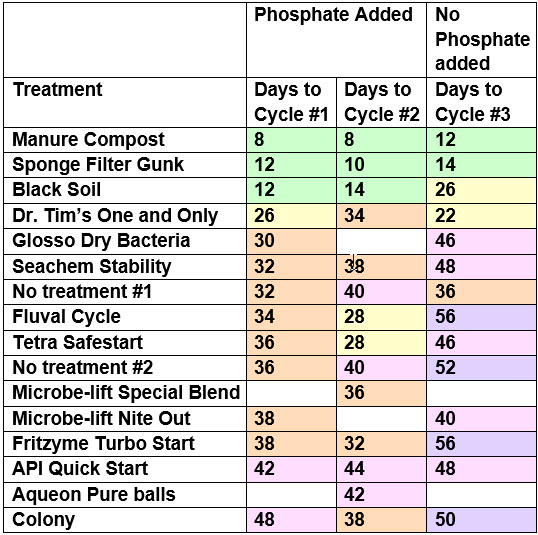
The tests proved that bacteria-in-a-bottle products do not help establish a cycle any faster than adding nothing will (there were a total of six “controls” [“No treatment #1 and #2] which came out the same as adding bacteria in a bottle products). None of them will do anything to “avoid new tank syndrome”. And if one wants to avoid adding fish during the ammonia and nitrite spikes of cycling, these products will not allow one to “add fish immediately”.

The addition of phosphate turned out to be very interesting. It helped the cycle time to add phosphate. It also appears manure compost and sponge filter gunk (and maybe Dr. Tim’s?) have significant phosphate in them but black soil does not have phosphate. But more tests would be necessary to firm up that data. Note that it is also possible the Dr. Tim’s was the only fresh product used in the test, giving better results.
Note that this test was deliberately kept very simple so that anyone can easily duplicate it if they want to. A rigorous scientific test under laboratory conditions cannot be replicated by any hobbyist so that was not done. This test was not designed to be published in some scientific journals. But the JMP statistical software was used which proved the conclusions were true. This modern computer software is VERY powerful and simply cannot be contested.
Note that several people have now duplicated this test on a smaller scale with compost and gotten similar results. The one point found by these hobbyists was that commercial soil mixes from the garden store do NOT contain a lot of beneficial bacteria and do NOT speed up the cycling time. This is because this soil is sterilized, which kills all the beneficial bacteria.
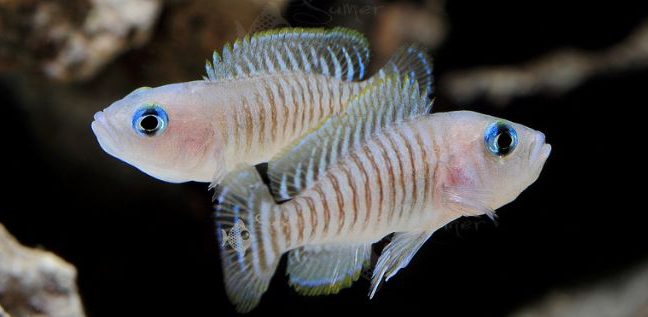
Test Equipment:
- Home Depot Five-gallon buckets
- 200 grams BASF ammonium chloride dissolved in 500 milliliters Frey Scientific Ammonium Hydroxide, 6 Molar
- potassium phosphate powder, internet purchase
- air pump and air lines
- mini sponge filters

Test Procedure:
5-gallon buckets were set up as aquariums with reverse osmosis water and sponge filters. All the buckets in the first two runs of this test had some high phosphate fertilizer (one small pinch of potassium phosphate powder), one time add as per a pertinent research paper (“Identification of Bacteria Responsible for Ammonia Oxidation in Freshwater Aquaria”, Timothy A. Hovanec, et. al. 2001). Different bacterial water treatments were then tried.
Composted manure (Black Kow), black soil from a backyard garden, and brown squeezings from a sponge filter were the non-commercial treatments. The soil and compost were just a half teaspoon or so just dumped into the bucket. But I’ve done a lot of my main tanks by using a sock (the type you put your feet in). I put a teaspoon or so of what ever… soil, compost, pond mud … into a sock and put it in the tank. Then I squeeze it a few times every time I’m near the tank. Two buckets had nothing added (the “controls”).
The buckets were then cycled with ammonia (2 ppm ammonium chloride/ammonium hydroxide daily) for four days with no testing. The buckets were then tested every other day for ammonia and nitrite. The pH was also measured and kept above 7.0 by adding baking soda when the pH dropped. We did not measure nitrate as this is NOT a reliable indicator that an aquarium is cycled.
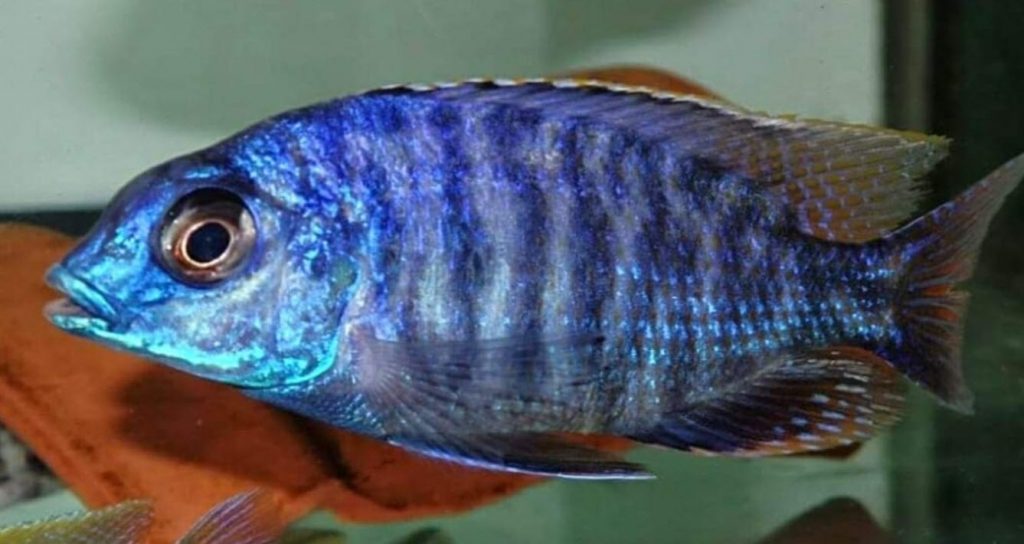
Results
Defining “cycled” as zero (technically it is < 0.25 ppm) ammonia and nitrite for four days (two readings), the results in column “days to cycle #1” above were obtained. Note that cycling is a highly variable process and this definition is thus important. Many add bacteria in a bottle product, some fish, and some food to an aquarium, get zero ammonia in one day and proudly announce to the world that the bacteria in a bottle product worked great. Because of heterotrophic bacteria doing something called “assimilatory denitrification,” this is quite possible. But it is a temporary phenomenon and won’t last.
Each bacteria-in-a-bottle product was used according to the directions on the respective container for the length of the test. This is an easy test anyone can do. Interesting.
Note that, technically, because completion of cycling was defined as two zero readings two days apart, four days can be subtracted from each result to give the true “time to cycle”.
For those with a statistical bent, the nine readings (N=9) that were bacteria-in-a-bottle in the first test had a mean of 35.3 with a standard deviation of 6.1. That means that all three compost, “gunk” and the dirt samples in the first test were significantly different from the bacteria-in-a-bottle samples (p<0.01) per the JMP software package.
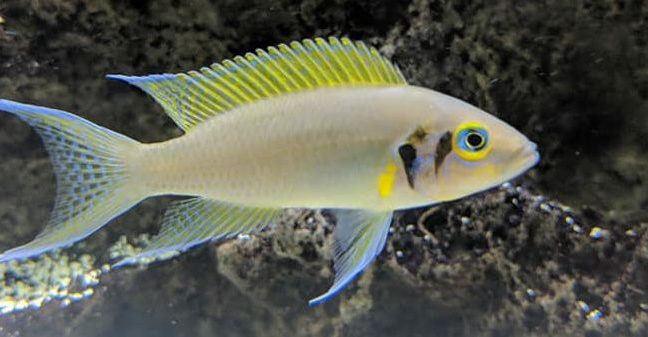
Test Replication
The test was then repeated with five changes to the inoculate used;
- Black Kow manure compost was replaced with black compost from a garden compost heap.
- Soil from a garden was replaced with black soil from a potted plant from the supermarket
- Squeezings from a sponge filter were replaced with debris washed off of some Matrix filter media
- Microbe-Lift Nite-Out II was replaced with Microbe Lift Special Blend
- Glosso Factory Dry Format Bacteria was replaced with Aqueon Pure WC Balls
The sponge filters were thoroughly cleaned and sterilized in a warm 10% bleach solution. The bleach was then neutralized with sodium thiosulfate.
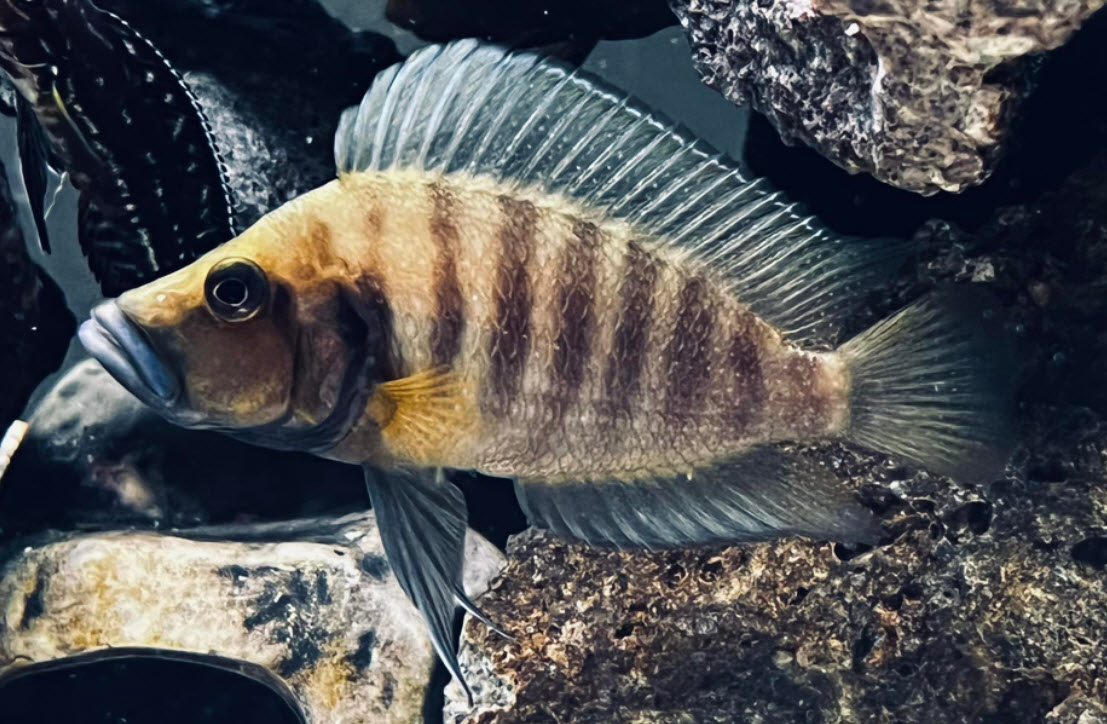
5-gallon buckets were set up as aquariums with reverse osmosis water and sponge filters. All the buckets had some high phosphate fertilizer (one small pinch of potassium phosphate powder), one time add as per a pertinent research paper (“Identification of Bacteria Responsible for Ammonia Oxidation in Freshwater Aquaria”, Timothy A. Hovanec, et. al. 2001). Different bacterial water treatments were then tried. Two buckets had nothing added (the “controls”). The buckets were then cycled with only ammonia (2 ppm ammonium chloride/ammonium hydroxide daily).
The buckets were then tested every other day for ammonia and nitrite. When both ammonia and nitrite hit zero the bucket was considered cycled. These are the results in the column “days to cycle” above. The results were statistically significant at the 95% level per JMP software. Note that this software works with zero replications and many variables. Historically, at least three replicates and one variable were the minimum for a “good experiment”. With modern computer software that simply is not true.
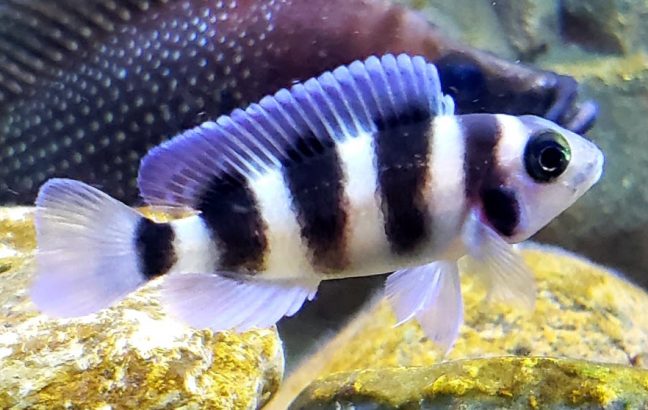
No Phosphate Test
The phosphate addition was a kind of mindless addition that wasn’t even mentioned in the original write-up on this experiment since it didn’t seem all that important. But then the author thought it might be a good idea to validate that the phosphate was unimportant. It turned out the phosphate was important. Whoops.
5-gallon buckets were set up as aquariums with reverse osmosis water and sponge filters. No phosphates were added. Different bacterial water treatments were then tried. For non-commercial inoculates we returned to the original Black Kow manure compost, soil from a garden, and squeezings from a sponge filter.
Two buckets had nothing added (the “controls”). The buckets were then cycled with ammonia (2 ppm ammonium chloride/ammonium hydroxide daily).
The buckets were then tested every other day for ammonia and nitrite. The results are in the column “days to cycle #3” above. ALL the treatments save three treatments took an average of 12 days longer when no phosphate was added.

Phosphate was more important than originally surmised. It also appears that composted manure, brown gunk from an established aquarium, and Dr. Tim’s One and Only bacteria in a bottle have significant amounts of phosphate in them. Note the use of the term “appears”. While statistical analysis said the One and Only did indeed do better than the other products what caused the difference is only a guess. But the eight bacteria in a bottle products (excepting the Dr. Tim product) and the two “controls” took an average of 12 days longer to cycle without phosphate additions. This is a sizable difference which was statistically significant at the 95% level per JMP software.
Also, note that the exact chemical used for the addition of the phosphates is probably immaterial. One can buy potassium phosphate, sodium phosphate, or any one of several calcium phosphates over the internet. Or one can simply add a high phosphorus garden fertilizer (that is a fertilizer where the middle number is high, like Scott’s Super Bloom 12-55-6, Flower Fuel 1-34-32, or Miracle-Gro Bloom Booster 15-30-15).

Analysis
This study conclusively proved four things and only four things:
- Bacteria-in-a-bottle products do not speed up the aquarium cycling process, with no significant difference being seen between bacteria in bottle products and aquariums cycled with nothing added.
- Compost, brown gunk from an established filter, and soil do speed up the aquarium cycling process significantly.
- Cycle time is reduced by the addition of phosphate at the start of the cycle.
- Dr. Tim’s One and Only beneficial bacteria-in-a-bottle did have some positive effects on cycling. This may only be due to it being a fresher product.
One must caution against reading anything else into the study. The test only proves the four things above and nothing else. Note these conclusions are based on analysis by JMP statistical software and all four are what are termed “significant at the 95% significance level”. What this means is that these four conclusions were proven by the test. Note that this software works with zero replications and many variables. Many seem to think at least three replicates and only one variable is necessary for a “good experiment”. With modern computer software that simply is not true.

Other Experimenters in Depth
The results of this experiment correlated closely with another experimental study done by BrokenAquarium.com. The study by Broken Aquarium had the “Control” cycling at 22 days, FritZyme at 27 days, and Stability at 33 days.

This shows the nitrite results for the Broken Aquarium experimenters.
The Broken Aquarium tests showed one thing and one thing only:
- Bacteria-in-a-bottle products do not speed up the aquarium cycling process, with no significant difference being seen between bacteria in bottle products and aquariums cycled with nothing added.
What is interesting is the conclusion that Broken Aquarium came to:
- “Both aids and even the control can all be used for aiding in the nitrogen cycle of an aquarium“.
This is just plain funny. What they are saying is that adding nothing (the control) “can all be used for aiding in the nitrogen cycle of an aquarium“. LOL, This site is sponsored by American Aquarium Products, which sells Stability and Fritz Zyme. The power of the profit motive at work.
One YouTube video maker, Girls Talk Fish, did a very well-run test with Fritzyme 7 bacteria in a bottle where the tank wasn’t yet cycled at 63 days of running. The reference is the “Girls Talks Fish” YouTube channel video called “How to Cycle a Tank Without Fish | Part 1 Cycling Experiments” – Nov 7, 2020. After trying to cycle with only ammonia didn’t work, GirlsTalksFish added FritzZyme7 bacteria (min. 3:10). After two more weeks, she got a result of nitrate. But after 9 weeks (63 days) the tank wouldn’t oxidize 2 ppm of ammonia in 24 hours (min. 4:12). She stopped the test at 63 days. GirlsTalksFish even said about the whole process that she “was feeling highly discouraged”.
.
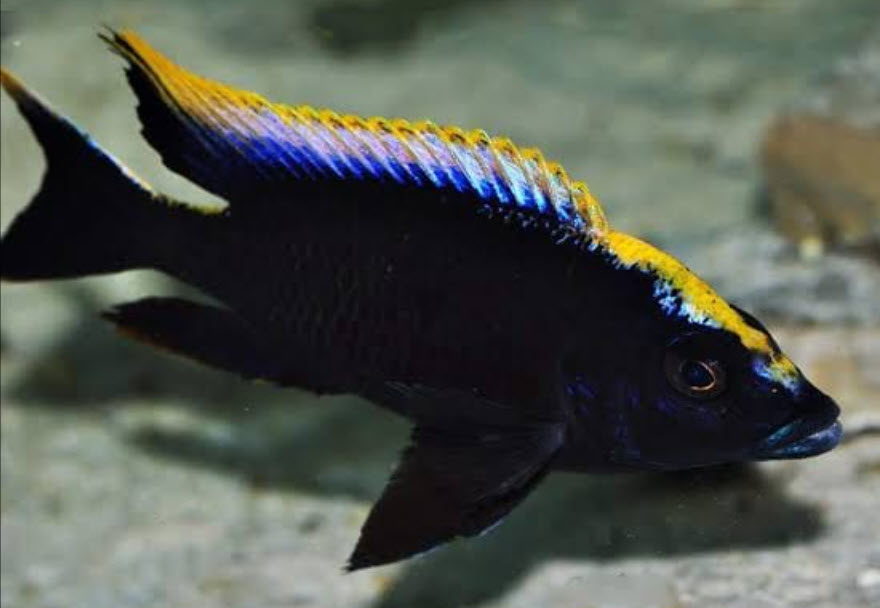
There have been some old journal studies done on “bacteria-in-a-bottle” and the formulations were found to be ineffective (Bower, C. E., and D. T. Turner. 1981. “Accelerated nitrification in new seawater culture systems: effectiveness of commercial additives and seed media from established systems”. Aquaculture. 24.1-9; Timmermans, J. A. and R. Gerard. 1990. Observations sur l’utilisation en etangs de suspensions bacteriennes du commerce. Bull. Fr. Peche Piscic. 316:28-30.).
Now we don’t like anecdotal evidence. But one Bill Walker commented in the comments section of this website that was pertinent:
“Hi Dave, used your method to cycle with Dr. Tims ammonia and Black Kow inoculate (and some miracle gro bloom). Added 4 drops per gallon every day, regardless of ammonia/nitrite reading. Black Kow in a bio bag positioned overflow from large airstone. Tank cycled in 9 days. Dead simple.”
Nine days to cycle using ammonia and Black Kow compost. Interesting!
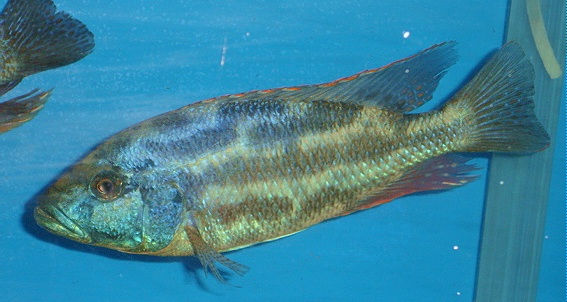
Bogus Research and Marketing Hype
There is a lot of bogus “research” and “papers” available on the web which were created by the manufacturers of bottled bacteria. They make for hilarious reading if you understand the biology of beneficial bacteria.
Cultivating Beneficial Bacteria
To understand “bacteria in a bottle” one must understand the following points about beneficial bacteria (synonymous with “nitrifying bacteria”);
- It is very difficult and extremely expensive to make and maintain pure cultures of only beneficial bacteria ($200 to $400 for small amounts of freeze-dried media). Thus no commercial bacteria-in-a-bottle product may have a “special” strain (or strains) of nitrifying bacteria in it. Can’t happen.
- It is almost equally difficult and expensive to culture only nitrifying bacteria and no common heterotrophic bacteria (“heterotrophic” means organisms that eat carbohydrates and proteins).
- All “bacteria in a bottle” products, if they have any bacteria in them at all, are all mixed cultures of very small numbers of many strains of the same beneficial bacteria and large numbers of a huge variety of other “common” heterotrophic bacteria and organisms.
- Beneficial bacteria reproduce and live largely on surfaces, including the surfaces of mulm and brown gunk. The clear bottles of “bacteria-in-a-bottle” have no surfaces other than the bottle itself for beneficial bacteria to live on.
- Beneficial bacteria cannot live long in environments with even low levels of oxygen.
- If “bacteria in a bottle” contained large quantities of bacteria of all sorts and only a small amount of air, the various other bacteria present would reduce oxygen levels in the bottle to the point where the beneficial bacteria would die.
- So “bacteria in a bottle” can only contain small numbers of bacteria which include a very small proportion of beneficial bacteria, in other words, there can’t be many beneficial bacteria in a bottle of “bacteria-in-a-bottle”.

What is Bacteria in Bottle Products?
Seven of the eleven products tested had only identical slight “hay” smells and no color, which argues for a common “private label” manufacturing line. The FritzZyme product was light clear peach color (NOT a brown color like it should be!) but had no odor. Note that beneficial bacteria have a very characteristic “earthy” smell and a brown color yet none of these products exhibited that.
The bottles of bacteria were all a clear liquid except Dr. Tim’s One and Only. Dr. Tim’s is a slightly white milky fluid after shaking. Beneficial bacteria can only live on surfaces. So, for all the products save Dr. Tim’s, where are the surfaces these beneficial bacteria are living on? How many bacteria can there be in that bottle? For comparison, there are 19,000,000 beneficial nitrite-oxidizing bacteria in one gram of soil per Gibbs (page 456).

Marketing Hype
Many of the “bacteria in a bottle” and “manufacturers” share a common “marketing hype”. They refer to the many souls (such as the researchers above) who have reported trying several beneficial “bacteria in a bottle” and not gotten good results. They say that this is expected as the “other manufacturers” use BB sources that have bad strains of BB. But “their strain” and ONLY “their strain” of BB are “different” and work very well. If you believe this hype go ahead and waste your money.
One very popular product (Seachem Stability) claims they have isolated a singular strain of beneficial bacteria that is far superior to anybody else’s product. Still another product (Tetra Safestart) goes so far as to claim they have patented their strain of bacteria. Again, culturing a single strain of beneficial bacteria is very difficult and expensive. You can buy pure cultures of many nitrifying bacteria for $200 to $400 for a small amount of freeze-dried media.

One concept put forth by these manufacturers is that there are some “soil-based subspecies” which live five to ten times longer than the aquarium species and can serve in an aquarium. Interesting line of marketing hype. The beneficial bacteria species in the aquarium are very primitive organisms that only need a modicum of moisture and some oxygen to survive. Add some carbon dioxide and some ammonia and they will start slowly reproducing. They do this in ALL environments equally well.
All species are found in all environments, from streams to soil to sewage to oceans (“The Isolation and Study of Nitrifying Bacteria”, 2012, William Gibbs). The species found in aquariums are identical to the species found in soil (“Aquarium Nitrification Revisited: Thaumarchaeota are the Dominant Ammonia Oxidizers in Freshwater Aquarium Biofilters”, Sauder et. al. 2011). There are no separate “soil subspecies”. Now in one environment, one species might be relatively rare while in another environment the same species might be the predominant species. But all species are found pretty much everywhere.
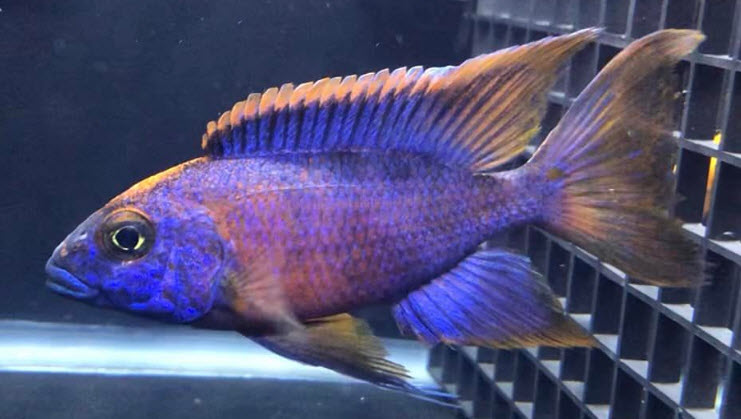
To illustrate this look at using only ammonia and no inoculate to cycle an aquarium (i.e. what was done by the two “controls” in the two studies above). You can set up a new aquarium with substrate and a filter, add some ammonia and turn everything on. In four to six weeks, you will have large colonies of beneficial bacteria. Where did these bacteria originate? They originated in dust particles and aerosols in the air, with small numbers being present even in chlorinated water or on one’s hands. All species of beneficial bacteria are found everywhere.
Nitrifying bacteria are a problem in water supplies treated with chloramines. Despite the presence of the chlorine they “eat” the ammonia in the chloramine and create a biofilm. This necessitates cleaning the lines with chlorine pulses.

Probable Manufacturing Technique
At least seven of these eleven “bacteria in a bottle” products are probably made via one technique. A quantity of farm soil (one fertilized for years with ammonia fertilizers) or possibly the sludge from a sewage treatment plant, will be mixed in water in a continuous feed high-intensity mixer.
The resulting suspension will be continuously filtered to say 20 microns. The resulting fluid will then be diluted to where there is only a very small number of bacteria of all sorts per volume of water and bottle. If too many bacteria are present the water will use up the oxygen in the bottle and the culture will go “bad”.
Probably most “bacteria in a bottle” products are all made by one or two suppliers and simply put in different containers for each “manufacturer” (something called “private labeling”). This is a cheap and easy process with a huge profit margin.
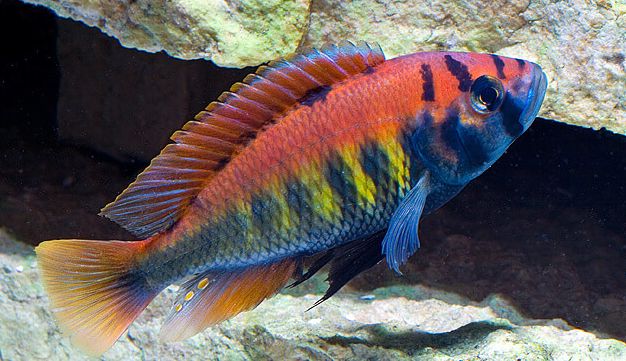
Dr. Tim’s One and Only
Dr. Tim’s One and Only is different. This write-up was done with the first two tests initially and Dr. Tim’s had no statistically significant difference from the other bacteria-in-a-bottle products. But running the statistics with the third test said Dr. Tim’s was significantly better (90% confidence level).
It is possible to come up with a manufacturing process that gives a decent product that has some beneficial bacteria in it. Not a lot but some. It would involve a large mulm reactor fed ammonium chloride, sodium phosphate, sodium bicarbonate, powdered polyethylene, and micronutrients. And the effluent of the reactor would have to be diluted a great deal. But it could be made to work to produce a product with a small number of beneficial bacteria in it. Dr. Tim may well use such a process. Or it may have just been a fresher product.

Seachem Stability
To illustrate the “questionable” claims made about bacteria-in-a-bottle let’s look at Seachem Stability. The package says:
“Stability will rapidly and safely establish the aquarium biofilter in freshwater and marine systems, thereby preventing the #1 cause of fish death: “new tank syndrome.” Stability is formulated specifically for the aquarium and contains a synergistic blend of aerobic, anaerobic, and facultative bacteria which facilitate the breakdown of waste organics, ammonia, nitrite, and nitrate.”
You must admire the marketing department at Seachem. Very talented, ingenious writers who take some big scientific terms and smoothly “wordsmith” them into something that sounds correct. It is simply pseudoscientific bedazzlement of the first order.
What is hilarious about this is that Seachem ran cycling tests which it reported on its website where Stability took 32 days to complete the cycle. These are the results of their testing:
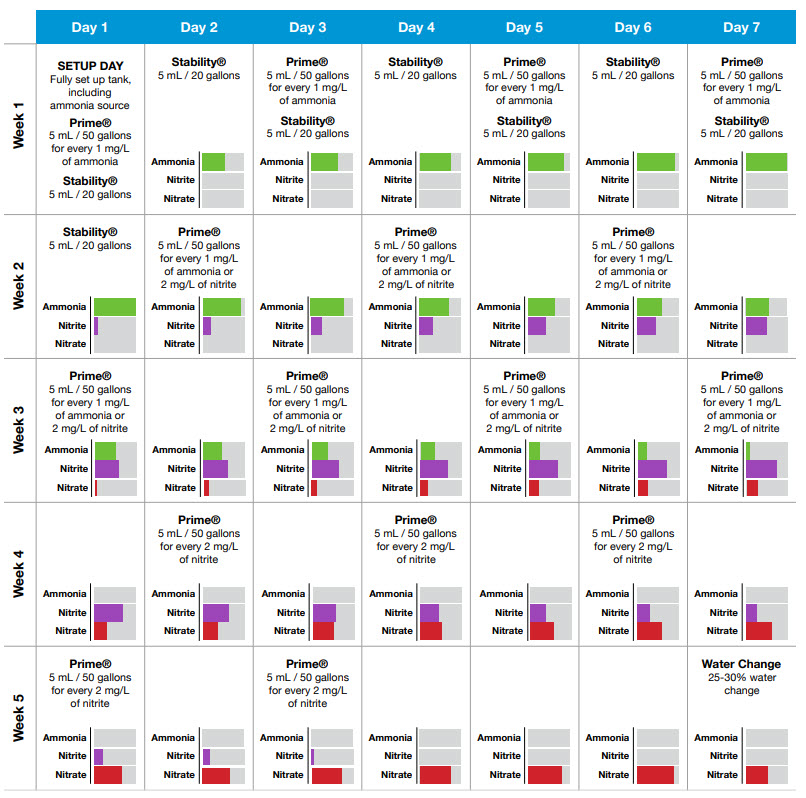
Guess the Seachem folks have a different definition of cycling and “new tank syndrome” than the rest of us. Note that the results of this Seachem testing correlated well with the test results above. Note also that, after this chart was posted in Aquarium Science, the chart was removed from the Seachem website.
Now the Seachem folks increase their profits immensely on this product with their directions:
“Use 1 capful (5 mL) for each 40 L (10 gallons*) on the first day with a new aquarium. Then use 1 capful for each 80 L (20 gallons*) daily for 7 days. Fish and other aquatic species may be introduced at any time as long as the dosage is maintained for 7 days. For optimum biofilter performance use 1 capful for each 40 L (10 gallons*) once a month or with each water change and whenever introducing new fish or whenever medicating an aquarium.”
This is pure profit-driven marketing hype by Seachem. There might be a very very small benefit to the first addition of Stability (although testing says there is no benefit) but adding more over time simply makes no sense. And adding it at water changes is just ridiculous.
Nitrifying bacteria multiply by splitting in two, typically once a day. So why would one add more bacteria after the initial addition? That simply makes no sense. But these measures put a lot of money in Seachem’s pocket.
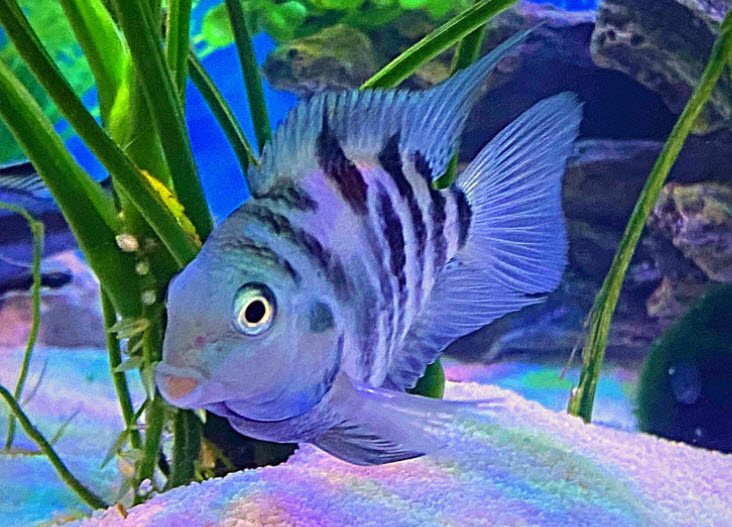
It should be mentioned that some products make Seachem look like rank amateurs when it comes to manure spreading. These are the claims made for Brightwell Aquatics MicrōBacter7:
“Brightwell Aquatics MicrōBacter7 is a selective complex of extremely effective microbes and enzymes that rapidly reduces the concentrations of organic nitrogen, ammonia, nitrite, nitrate, phosphate, and organic carbon in all marine and freshwater ecosystems, leading to greatly improved water quality.“
This is a pile of pure horse manure.

I thought this was the most egregious of the many false claims over bacteria in a bottle until I ran across this:
BioDigest is a natural mixture of live bacterial strains to help reduce and remove nitrates and phosphates through bacterial digestion. Utilizing a wide mixture of heterotrophic bacteria that work together to start the conversion process and then other strains of bacteria that will be able to finish the nitrogen cycle into elemental nitrogen. The concentrated mixture will effectively eliminate waste from your aquarium through a biological filtration process, leaving your aquarium with cleaner water that will greatly increase the health of your saltwater aquarium.
-
- Live Bacterial Strains
- Nitrates and Phosphates effectively reduced
- Prevents spreading of filamentous algae
- Converts ammonia into nitrites, nitrites into nitrates, and nitrates into nitrogen
Note: Prodibio utilizes glass vials which excel greatly over plastic containers when it comes to oxidation and contamination. Please read the “How to use the product” instructions that are included with each kit to properly break the glass vials. All vials are filled with argon or nitrogen instead of oxygen. The lack of oxygen within the vial allows the bacteria to remain dormant until the liquid is put in the aquarium. The dissolved oxygen in the aquarium will awaken the dormant bacteria.
ahhhahh I’m just at a loss for words. Every single word here is pure bullcrap. Unfortunately, too many people will believe this BS and at best, waste their money and at worst harm or kill their fish.
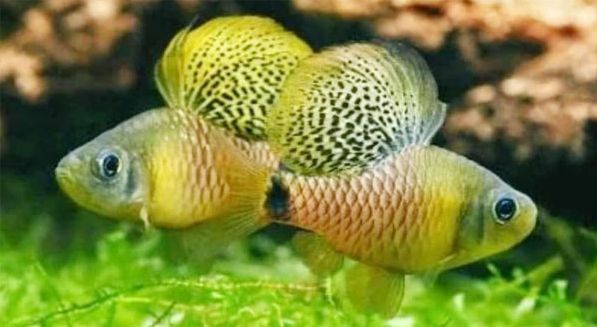
Microbe Lift Special Blend
There is one type of bacteria in a bottle that is different, very different. Above we mention that if too many bacteria are present in a bottle the oxygen in the bottle will be used up and the bacteria will die. Microbe Lift Special Blend deliberately puts a lot of “scum” and bacteria into the bottle. They then say that the foul smell in the opening is good. They also say that the slight collapsing seen in the bottle when the oxygen is used up is also good.
They claim the bottle contains all types of bacteria, aerobic, anaerobic, sludge-eating, nitrifying, and denitrifying. This is just laughable. Aerobic nitrifying beneficial bacteria will die when the oxygen in a bottle is used up. They claim this blend will allow instant start-up of an aquarium without cycling and that the blend will also decompose nitrates to nitrogen gas. This line of hogwash makes Seachem look like honesty personified.
Note the claims for this product were rewritten after I wrote this in 2022. They now say:
“Microbe-Lift Special Blend Salt & Fresh Water Eco System harnesses the cleaning power of beneficial bacteria to lower ammonia and nitrates, remove odors and cloudiness, break down protein foam and organic residue, and stimulate plant growth. You can use it as a maintenance formula to reduce the need to change the water as often, and as a new tank starter for biological cycling and boosting.”
This company now says one needs to add TWO products to “instantly cycle” an aquarium: Microbe Lift Special Blend and Microbe Lift Nite Out II. Still hogwash.

FritzZyme
There was even one manufacturer that manufactured phony research “papers” from three well-known universities. It was Fritz. One of the “papers” even had genuine professors as the authors of a “journal article”. But the research “journal article” was so ridiculous and violated so many good research principles that it was clearly not done by the authors sited. Comparing the bogus “journal article” to actual journal articles by the named professors made the forgery obvious. Searches of the papers from the Universities involved revealed no such “papers”. This was incredibly unethical but perfectly legal.
Fritz also has a YouTube video where their product is “tested” against three other “bacteria in a bottle” products in a 24-hour “instant cycling test”. The “test” showed no ammonia in their test tube and considerable ammonia in all three other product test tubes. And unicorns do exist. Even the best treatment in the test above (the compost) took five days before ammonia dropped to zero.
Fritz takes marketing hype to a level that is just highly unethical. It’s one thing to “stretch the truth” with huge exaggerations. It is totally another thing to fake test data and university papers.
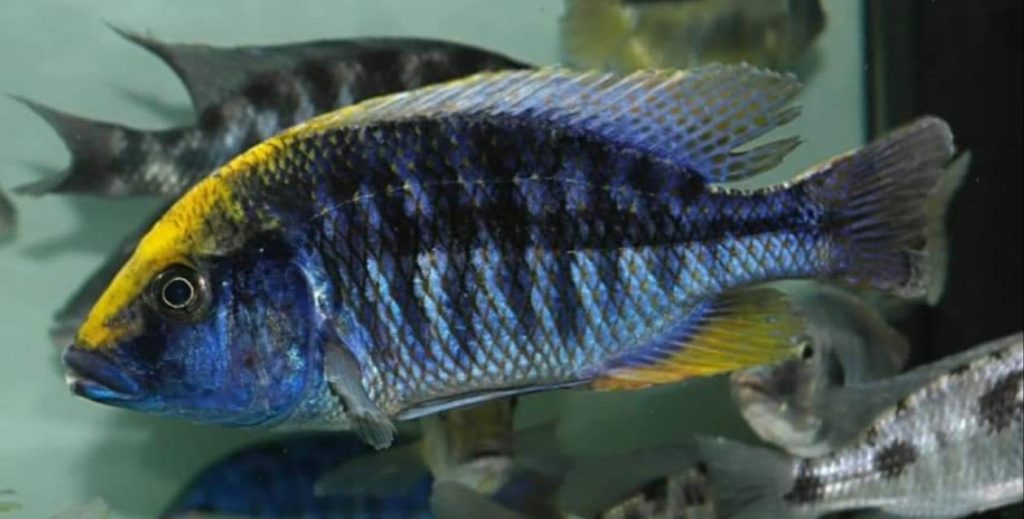
Recently one person came onto Facebook and said:
“Just cycled an aquarium in less than 32 hours using 3.5 PPM ammonia and Fritz Turbo Start 700 bacteria in a bottle“.
This string interested me and several other experienced hobbyists and I followed it and commented on several points. The person went off on several tangents, all supporting the Fritzyme product. Something seemed “off”. “3.5 ppm”? “32 hours”? hmmm……. Why 32 hours and not two days? Why 3.5 and not 4?
In any case, the best we have ever done even with tons of gunk from a long-established aquarium was five days. The person made vague claims I’d never heard before, like the Fritz products involved “cold treatments” that “preserved the beneficial bacteria”. Then it hit me, IT’S FRITZ! I had probably just been sucked in by someone in the Fritz marketing department. aaarrrrghghhghghghhhh …. dumb me!
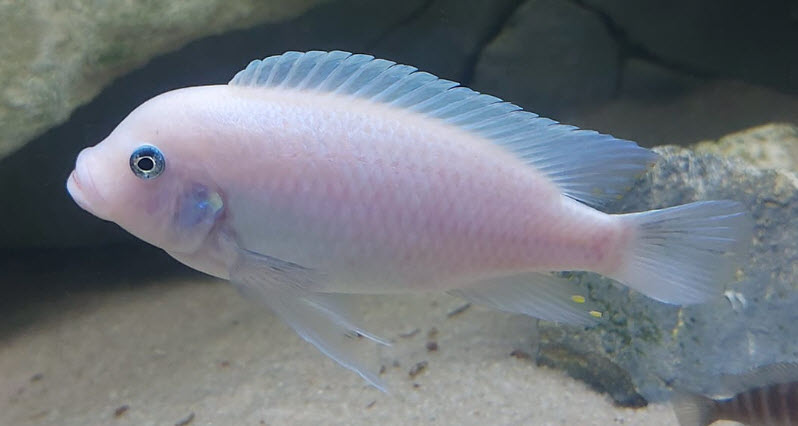
Another Facebook exchange is the following:
Me:
“Per extensive testing bacteria-in-a-bottle products do not work.”
Commentator:
“They haven’t tested ALL bb in a bottle. I’ve read the information and charts you posted extensively and Fritzyme was never part of their study.”
Me:
“Huh? Look at the chart below. Fritzyme Turbostart is the fourth line from the bottom?“
Commentator:
“lol. I guess I need to extensively read it again. I will say this though. I strongly disagree with their claim that bb in a bottle is useless and doesn’t work. I as well as many others have had great success using it.”
I didn’t reply for obvious reasons. Once again it was probably the marketing department at Fritz that I was having a “discussion” with.
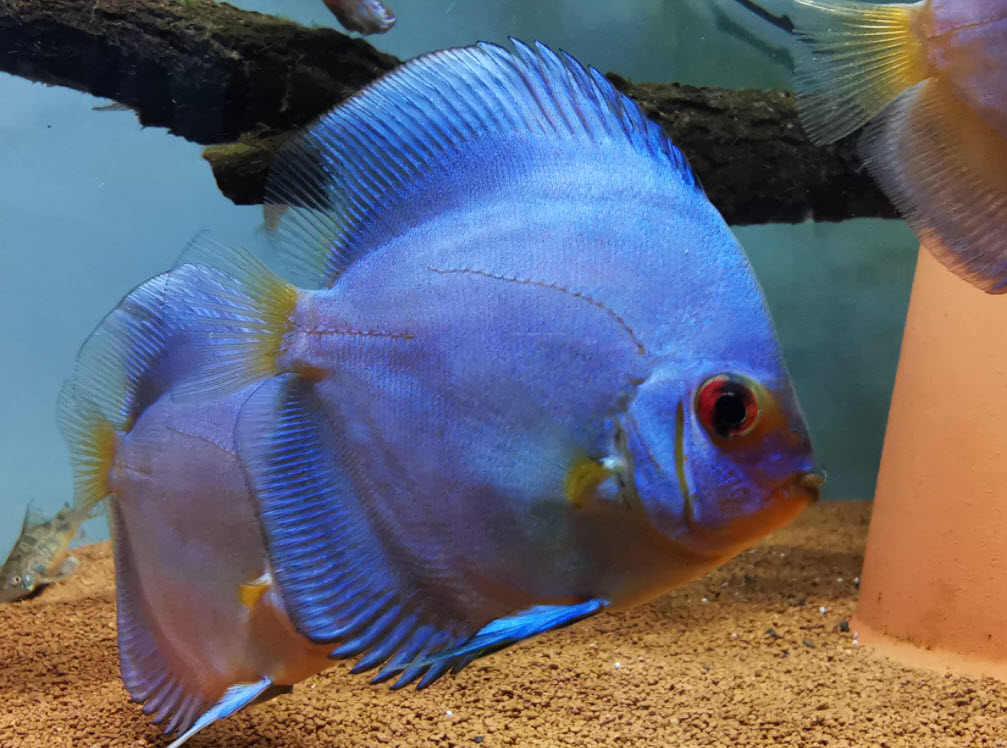
Every time I post the chart above on Facebook I get at least two commentators that say something along the lines of “That chart is made up data as I have cycled many tanks with Fritzyme in two days“. I do not get any commentators on any other bacteria in a bottle products. So Fritz has a very active presence on Facebook aquariums forums.
One popular YouTube video maker has recently made two videos where he claims to have cycled his aquariums in a single day with Fritzyme products. This video maker is selling Fritzyme products through his website. ‘Nough said.
EcoBio-Stone
Yet another big scam is EcoBio-Stone
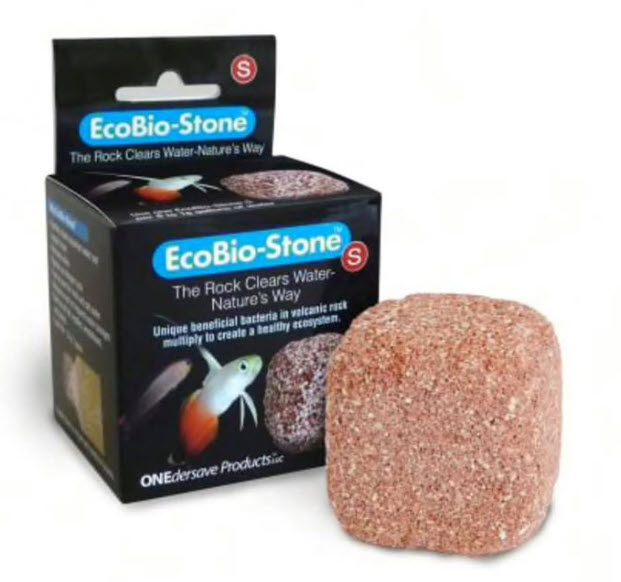
This product claims its “unique, mineral-rich porous stones contain nutrients and beneficial natural bacteria spores that only germinate when organic waste is present in the water“. Nitrifying bacteria don’t form spores. And this product is a very expensive form of what was tested above. It is a chunk of porous ceramic which may have been soaked in sewage for a while. Nothing illegal here, just preying on the naïve and hopeful.
Chemicals for Start-Up of an Aquarium
There are a host of products such as Seachem Prime which are claimed to “detoxify” ammonia during fish-in cycling and allow one to immediately add large amounts of fish to an aquarium. All these products are bogus. They were tested via the test recommended by Seachem and they didn’t work. The test can be found in this link:
2.9. Instant Start Chemicals
.
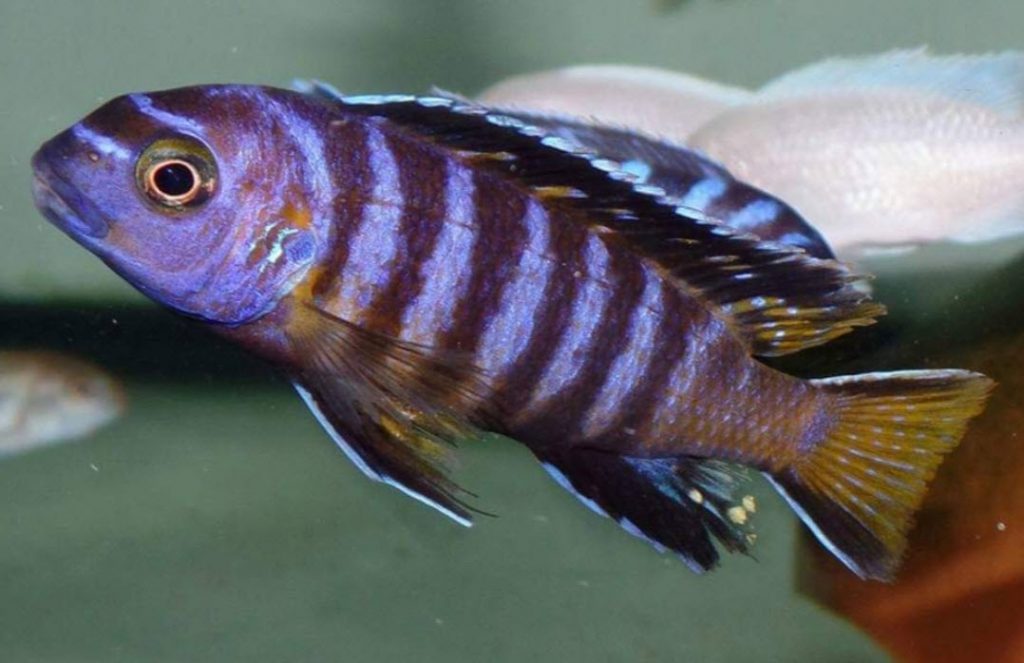
Be Skeptical
There are no regulations that govern the claims for aquarium products, so any creative marketing person can say anything they want to promote their products. So, skepticism is healthy when setting up an aquarium.
Note that there are probably thirty or so “instant start” products out there including wet media in a bag and dry powdered “beneficial bacteria”. These are all going to simply not do the trick. The only product of merit is live sponge filters from the Angels Plus website. These are sponge filters that have been cycling in actual aquariums for at least one month. They will have significant beneficial bacteria in them.
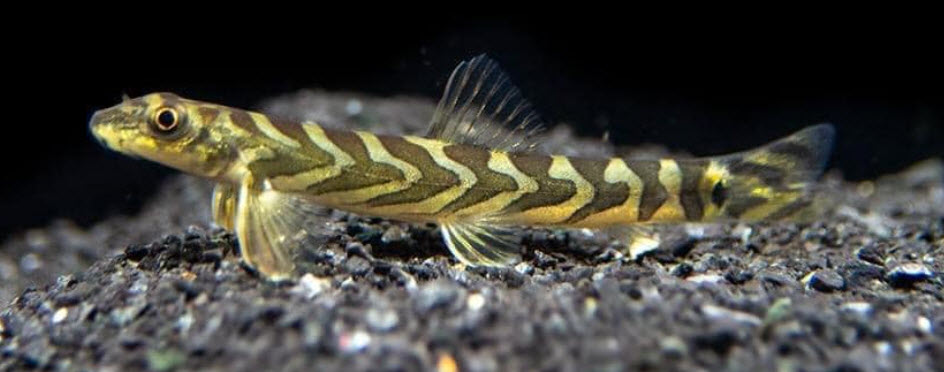
If you want to believe the claims and buy these bacteria-in-a-bottle products at least add some ammonia (one teaspoon of urine per 50 gallons will do nicely) and measure ammonia and nitrite 48 hours later before adding expensive fish. Don’t add fish until the ammonia and the nitrite both are zero. If you do that you will avoid the possibility of harming your fish.
Note the use of the term “possibility”. The reason there are so many glowing testimonials about how well this or that bacteria-in-a-bottle worked is that ammonia and nitrite are nowhere near the poisons they are reputed to be.
Probably 95% of the time newbies can add moderate amounts of fish to a tank without cycling and be perfectly successful. So 95% of the time newbies can add moderate amounts of fish and bacteria-in-a-bottle to an aquarium and be successful. The newbie thinks the bacteria-in-a-bottle product did a great job when in actuality it had zero effect on the cycling process.

To go to the summary page for this article go to this link:
2.8. Bacteria in a Bottle Products
.
Return to Cycling Menu
.
Aquarium Science Website
The chapters shown below or on the right side in maroon lead to close to 400 articles on all aspects of keeping a freshwater aquarium. These articles have NO links to profit-making sites and are thus unbiased in their recommendations, unlike all the for-profit sites you will find with Google. Bookmark and browse!

Dave says
In reply to Aaron. … This is what was claimed in 2022. Now they want to sell you two products to “instantly cycle” your tank. I.e. they wanted to double their profits. It is still a line of pure hogwash. Don’t believe a word of it.
Aaron says
Hi. I enjoy your content but what you say about MicrobeLift Special Blend is inaccurate. It does not claim to have aerobic bacteria. It says to cycle the tank it must be used in combination with NiteOut which does have nitrifying bacteria. Special Blend contains photosynthetic bacteria. The sulfur smell is whatever they put in the water to put the bacteria in a ‘hibernation’ state so to speak and then when added to the water they wake up and get to work.